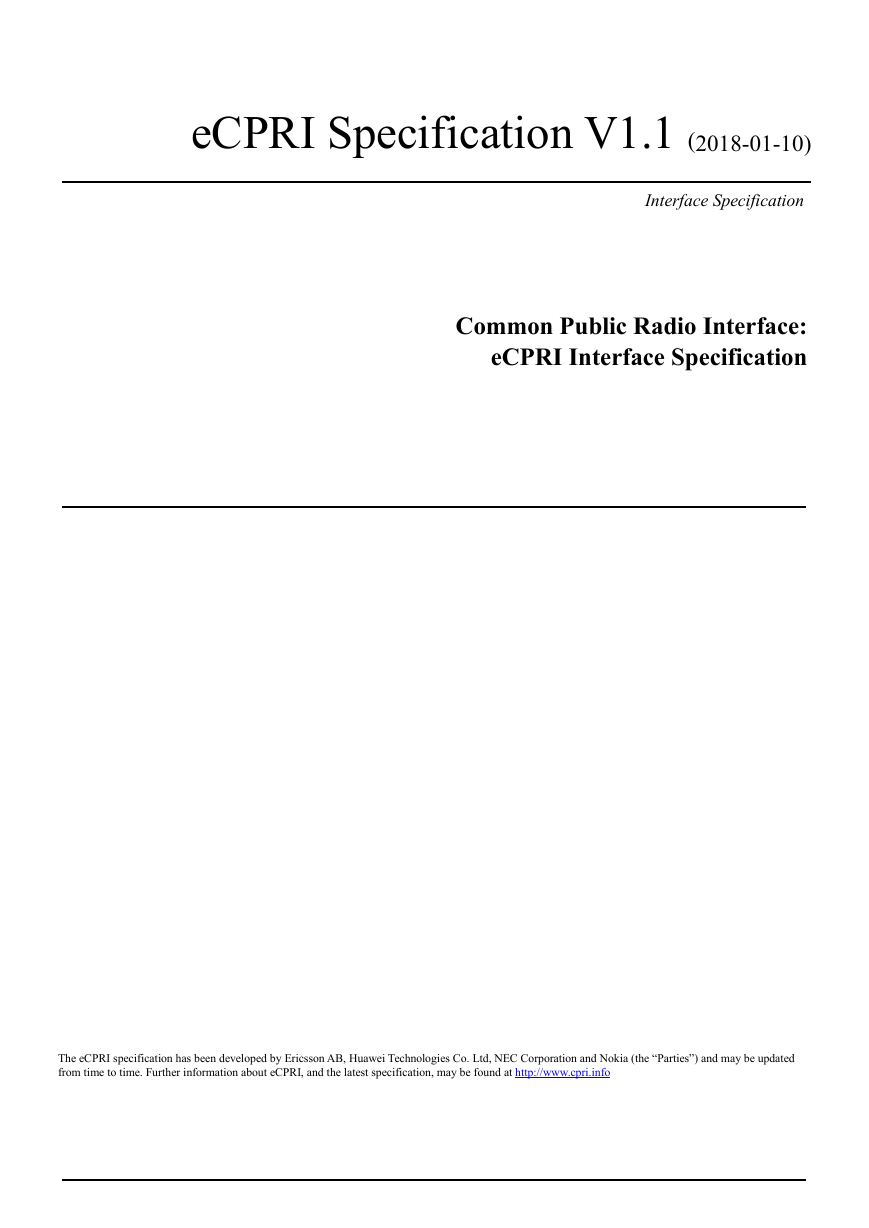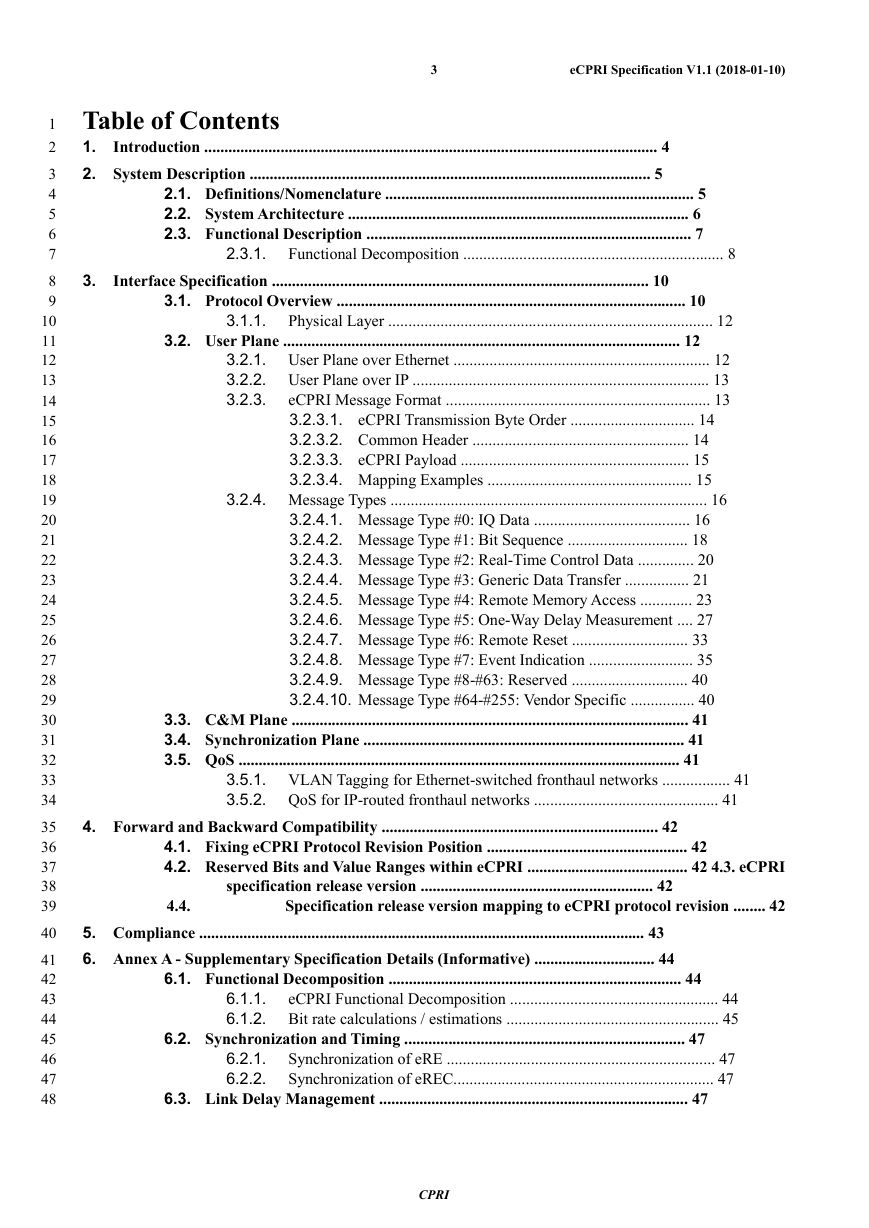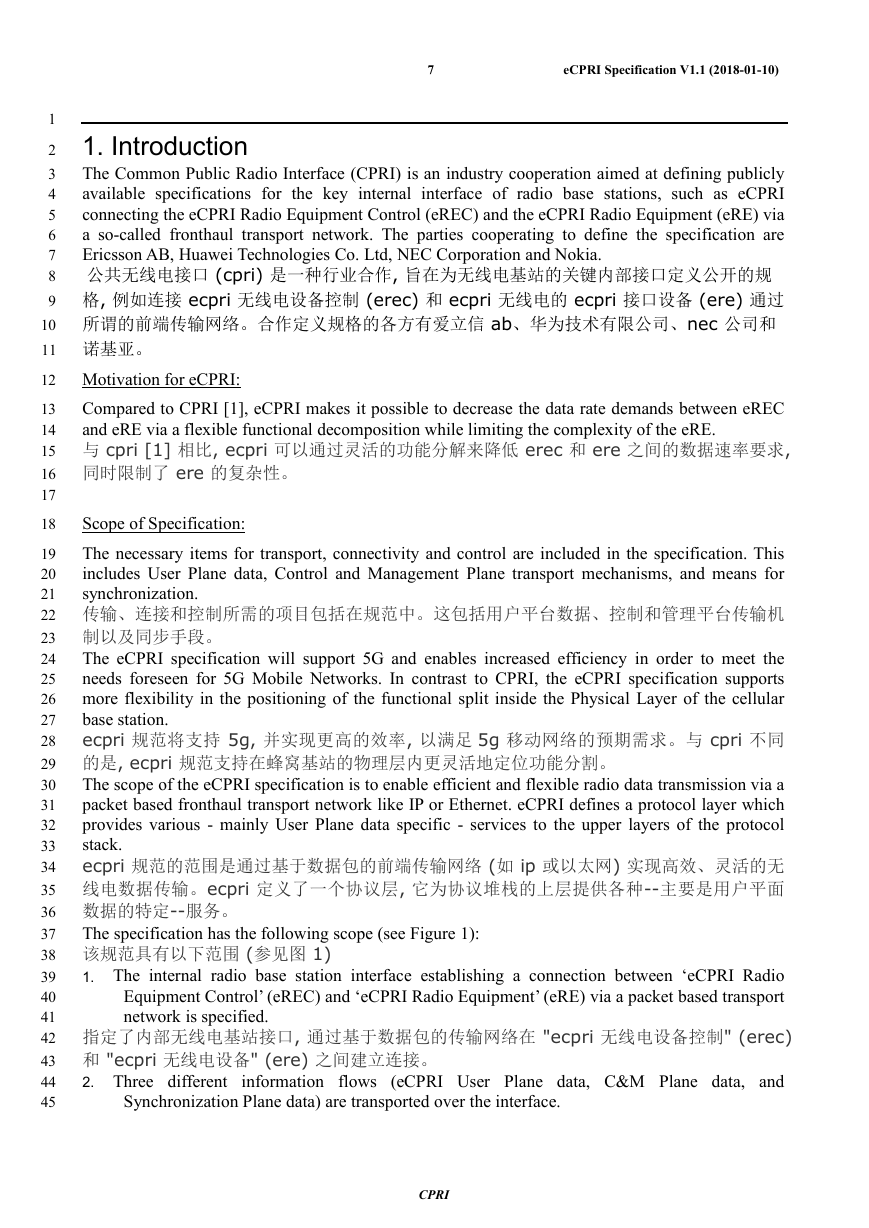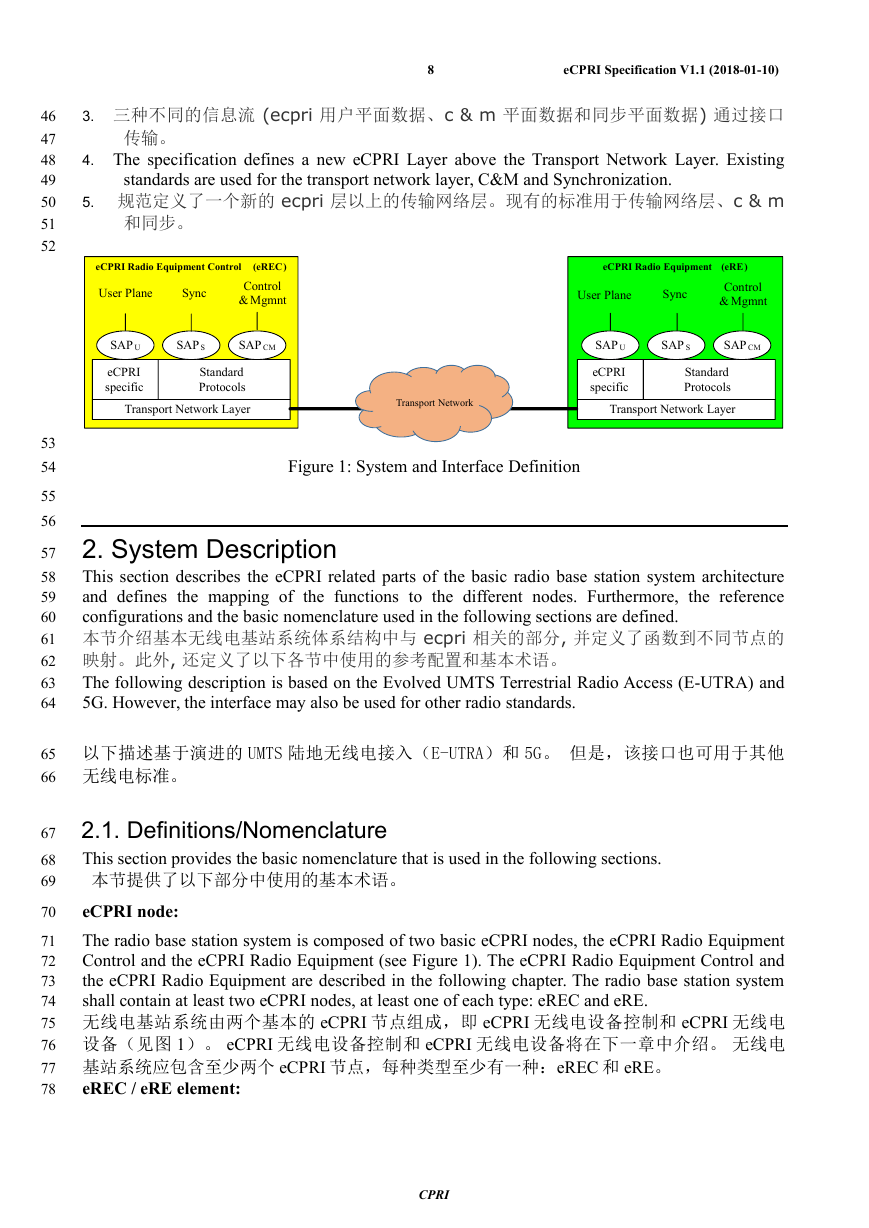1. Introduction
2. System Description
2.1. Definitions/Nomenclature
2.2. System Architecture
2.3. Functional Description
2.3.1. Functional Decomposition
3. Interface Specification
3.1. Protocol Overview
3 3.1.1. Physical Layer
16 3.2. User Plane
17 3.2.1. User Plane over Ethernet
3.2.2. User Plane over IP
3.2.3. eCPRI Message Format
4 3.2.3.1. eCPRI Transmission Byte Order
3.2.3.2. Common Header
3.2.3.3. eCPRI Payload
3.2.3.4. Mapping Examples
3.2.4. Message Types
3.2.4.1. Message Type #0: IQ Data
5 3.2.4.2. Message Type #1: Bit Sequence
3.2.4.3. Message Type #2: Real-Time Control Data
9 3.2.4.4. Message Type #3: Generic Data Transfe
16 3.2.4.5. Message Type #4: Remote Memory Acces
3 3.2.4.6. Message Type #5: One-Way Delay Measur
3 3.2.4.7. Message Type #6: Remote Reset
5 3.2.4.8. Message Type #7: Event Indication
3.2.4.9. Message Type #8-#63: Reserved
3.2.4.10. Message Type #64-#255: Vendor Specific
3.3. C&M Plane
3.4. Synchronization Plane
3.5. QoS
3.5.1. VLAN Tagging for Ethernet-switched frontha
3.5.2. QoS for IP-routed fronthaul networks
4.Forward and Backward Compatibility
4.1. Fixing eCPRI Protocol Revision Position
4.2. Reserved Bits and Value Ranges within eCPRI
4.3. eCPRI specification release version
4.4. Specification release version mapping to eCPR
1 5.Compliance
6.Annex A - Supplementary Specification Details (I
6.1. Functional Decomposition
6.1.1. eCPRI Functional Decomposition
3 6.1.2. Bit rate calculations / estimations
6.2. Synchronization and Timing
6.2.1. Synchronization of eRE
6.2.2. Synchronization of eREC
6.3. Link Delay Management
6.3.1. Reference Points for Delay Measurement
6.3.2. Delay Management example
9 6.4. Network Connection Maintenance
6.5. Networking
6.5.1. Difference between eCPRI and CPRI
12 6.6. Priority considerations
25 6.7. Message Ordering Considerations
6.8. Security
6.8.1. eCPRI Network Security Protocol
6.8.2. eCPRI Network Security Specification
6.8.2.1. User plane
6.8.2.2. C&M plane
6.8.2.3. Synchronization plane
7. List of Abbreviations
8. References
1 9. History
















 2023年江西萍乡中考道德与法治真题及答案.doc
2023年江西萍乡中考道德与法治真题及答案.doc 2012年重庆南川中考生物真题及答案.doc
2012年重庆南川中考生物真题及答案.doc 2013年江西师范大学地理学综合及文艺理论基础考研真题.doc
2013年江西师范大学地理学综合及文艺理论基础考研真题.doc 2020年四川甘孜小升初语文真题及答案I卷.doc
2020年四川甘孜小升初语文真题及答案I卷.doc 2020年注册岩土工程师专业基础考试真题及答案.doc
2020年注册岩土工程师专业基础考试真题及答案.doc 2023-2024学年福建省厦门市九年级上学期数学月考试题及答案.doc
2023-2024学年福建省厦门市九年级上学期数学月考试题及答案.doc 2021-2022学年辽宁省沈阳市大东区九年级上学期语文期末试题及答案.doc
2021-2022学年辽宁省沈阳市大东区九年级上学期语文期末试题及答案.doc 2022-2023学年北京东城区初三第一学期物理期末试卷及答案.doc
2022-2023学年北京东城区初三第一学期物理期末试卷及答案.doc 2018上半年江西教师资格初中地理学科知识与教学能力真题及答案.doc
2018上半年江西教师资格初中地理学科知识与教学能力真题及答案.doc 2012年河北国家公务员申论考试真题及答案-省级.doc
2012年河北国家公务员申论考试真题及答案-省级.doc 2020-2021学年江苏省扬州市江都区邵樊片九年级上学期数学第一次质量检测试题及答案.doc
2020-2021学年江苏省扬州市江都区邵樊片九年级上学期数学第一次质量检测试题及答案.doc 2022下半年黑龙江教师资格证中学综合素质真题及答案.doc
2022下半年黑龙江教师资格证中学综合素质真题及答案.doc